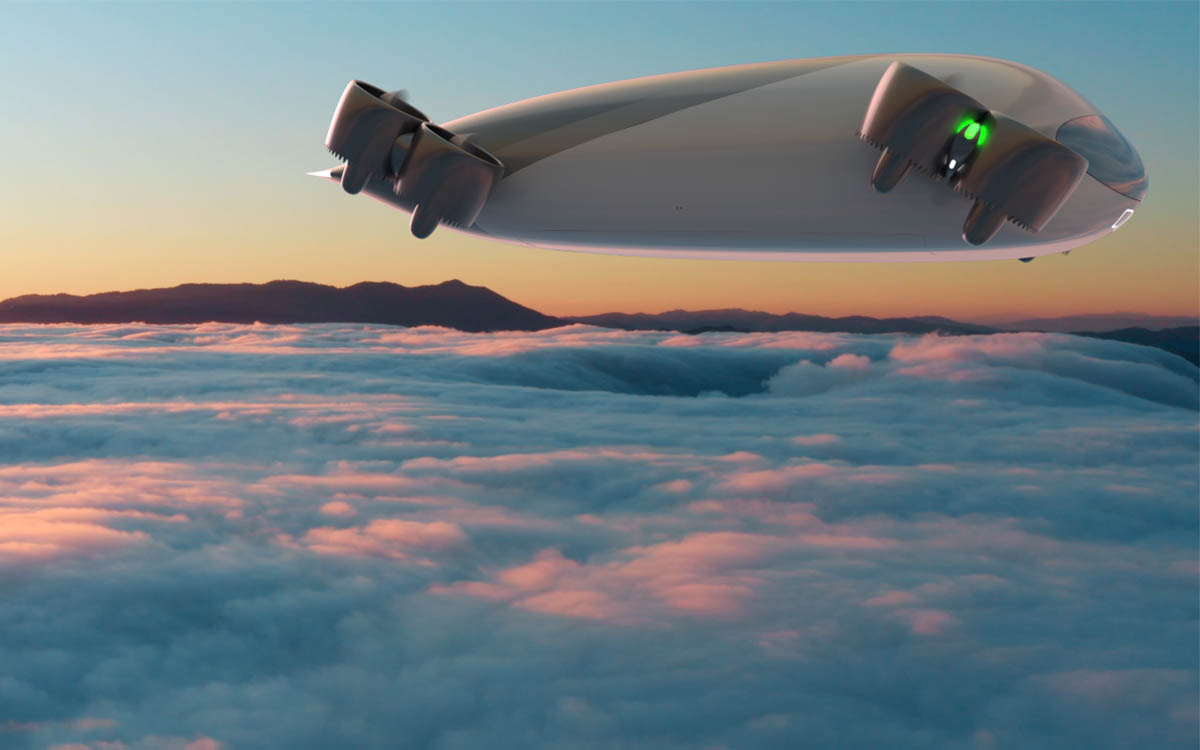Most of the companies that have presented a project related to electrical aviation work at the scale of the air taxis equipped with a cabin that can house between 2 and 5 passengers to make urban trips. From New York Kelekona stands out from this trend with the presentation of an eVTOL with the capacity to 40 passengers plus a pilot in which they can be traversed long distances at high speed. The design of the fuselage allows dispense with wings and entrusting lift to aerodynamics.
Of all the projects that had been presented so far, Lilium set the humble “record” of being the one with the greatest capacity in its cabin, up to seven seats (although the test prototype had a capacity of five). The difference with the rest is that it is not a giant drone. Its fully electric jet engines located on four fixed wings in addition to taking off, can rotate 180 degrees to steer it in any direction. Thanks to this capacity, it makes a difference by ensuring speeds of 300 km / h and travel distances of 300 kilometers.
Kelekona goes much further with his idea. In his web page ensures flights of long distance and high speed for its electric overhead buses, capable of transporting up to 40 passengers and a driver inside its cabin. As an example, he says that he will be able to travel the 531 kilometers that separate Los Angeles from San Francisco in just one hour. When used for the transport of goods, the load capacity s up to 4,540 kilograms.
Kelekona’s electric aircraft has a fuselage and a propulsion system prepared to carry out this type of operation. To rise will use four benches with two large electric fans each with variable pitch vane ducts. Once the flight height is reached, these same devices lean forward to initiate horizontal flight taking advantage of the vector push rotors. And this is where Kelekona makes a difference. While other aircraft use large and wide wings for gliding, Kelekona entrusts lift to the shape of the aircraft body, which ensures that it has a surface capable of holding it in the air without losing efficiency.
Kelekona promises 300-kilometer trips at speeds of 300 km / h carrying up to 40 passengers.
The fuselage has a thick, flat and very wide shape, which in its lateral profile approximates the shape of a teardrop. The front is rounded and the rear is spindle-shaped. At the bottom the shapes are flattened, while at the top it tends to a domed shape to make it a lifting surface. The result is a stable appearance that, saving distances, has a certain resemblance to airships.
Its size and weight will force you to move very fast to be able to sustain itself in the air with 40 people on board. It must be equipped with a large battery system (and weight) to be able to travel, at that speed, the long distances that it promises. Another handicap for Kelekona is recharging these batteries. Therefore, the company foresees that are replaceable, so that the waiting time does not limit the mobility of the device.
Heliports between three and four times larger than conventional ones will be needed to operate Kelekona’s electric aircraft, for which it will not be easy to find space in the architecture of large cities. A technologically innovative proposal and very different from what is known for now, which is aerodynamically quite improbable and energetically very complex, but which will have to be traced to its evolution.
– .


